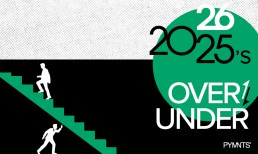Facebook reported results showing that consolidated revenues gained 21.6 percent to reach $21.5 billion, compared to the $19.8 billion expected. Core ad revenue growth was up 22 percent in the period, to over $21 billion. Daily active users were 1.8 billion, which was up roughly 12 percent year over year. Monthly active users, too, were up 12 percent year on year to 2.7 billion.
Demand had been boosted by the pandemic, a familiar refrain echoing throughout earnings from tech-focused players. Ad revenues, which are a bellwether of consumer spend, should accelerate into the current quarter, with a rate higher than seen in the most recent period, driven by the holiday season and strong advertiser demand.
SMBs, and Commerce, in Focus
During the call with analysts, CEO Mark Zuckerberg stated that more than 200 million firms use the company’s free tools, and added that there are more than 10 million active advertisers across Facebook’s services. With a nod to small business, the company is integrating WhatsApp business features with Facebook Shops, allowing SMBs to establish a simultaneous commercial presence across Facebook, WhatsApp and Instagram. Interoperability, where people can send messages between apps, is also being rolled out, said Zuckerberg.
“Most of these are small businesses,” he said. With other detail on user activity, Zuckerberg noted that private messaging “continues to be one of the fastest-growing forms of communication,” with about 100 billion messages exchanged every day on WhatsApp. He recounted that the company is in the midst of “making it easier for people to buy products directly within a chat.”
Advertisement: Scroll to Continue
WhatsApp, management said, is increasingly becoming a point of commerce, as more than 40 million people are viewing business catalogs each month. COO Sheryl Sandberg took note of the new shopping button that helps users discover a catalog and buy items. “Soon, you’ll also be able to click a WhatsApp icon on a Facebook Shop to chat directly with the business,” she said.
The acceleration of commerce efforts geared toward small businesses is also accelerating ad revenues, Sandberg said on the call.
A significant portion of the question and answer session with analysts centered on augmented reality, where management said investments will continue, tied in part to its Oculus headset. As Zuckerberg said, “whereas I do think to have viable augmented reality consumer glasses, you need to clear a number of technological hurdles.”
Data, Regulations and Apple
Apple’s recent data privacy changes may indeed serve as a contributor to those aforementioned headwinds into 2021. Scrutiny also looms on the regulatory front – particularly in Europe.
Calling out Apple and the regulatory climate in particular, Zuckerberg said: “I worry that some proposals, especially in the EU, and actions planned by platform companies like Apple, could have a meaningful negative effect on small businesses and economic recovery in 2021 and beyond.”
With a bit more detail into the headwinds tied to Apple and the controversies over iOS privacy settings –which Facebook has maintained in the past could impact app advertising – CFO David Wehner said “that impact won’t be felt in Q4, where prior we would expect to have seen that in Q4. So I think it’s mainly a delay in the impact rather than … a change in the impact. So we’re going to experience that in 2021.”
Apple’s planned new user settings, which will give users the choice to require apps to ask for permission to track those individuals across sites and other apps, could have a “disproportionate impact on app installs and thus our audience network,” Wehner contended.
He added that those ad tracking changes represent a big challenge for app developers who are looking to grow their business in what is a difficult time. “So, we think that challenge will remain when that implementation happens.”
Sandberg said on the post-earnings call that notable verticals included eCommerce, retail and consumer packaged goods. Ad impressions were up 35 percent, according to the company, while the average price per ad was down by 9 percent.
The company said that looking ahead, the number of daily and monthly active users in North America would be slightly down, or flat, compared to the third-quarter data just reported.
2021 looms with what is being termed by the company as a “significant amount of uncertainty,” as the firm laps difficult comps. The huge boost in eCommerce seen as the pandemic hit could be a headwind to 2021 ad revenue trends.
In addition, said Wehner, “we expect more significant targeting and measurement headwinds in 2021.” eCommerce, according to Sandberg, has indeed been gaining share as a percentage of retail sales, but future growth may be pulled forward.




